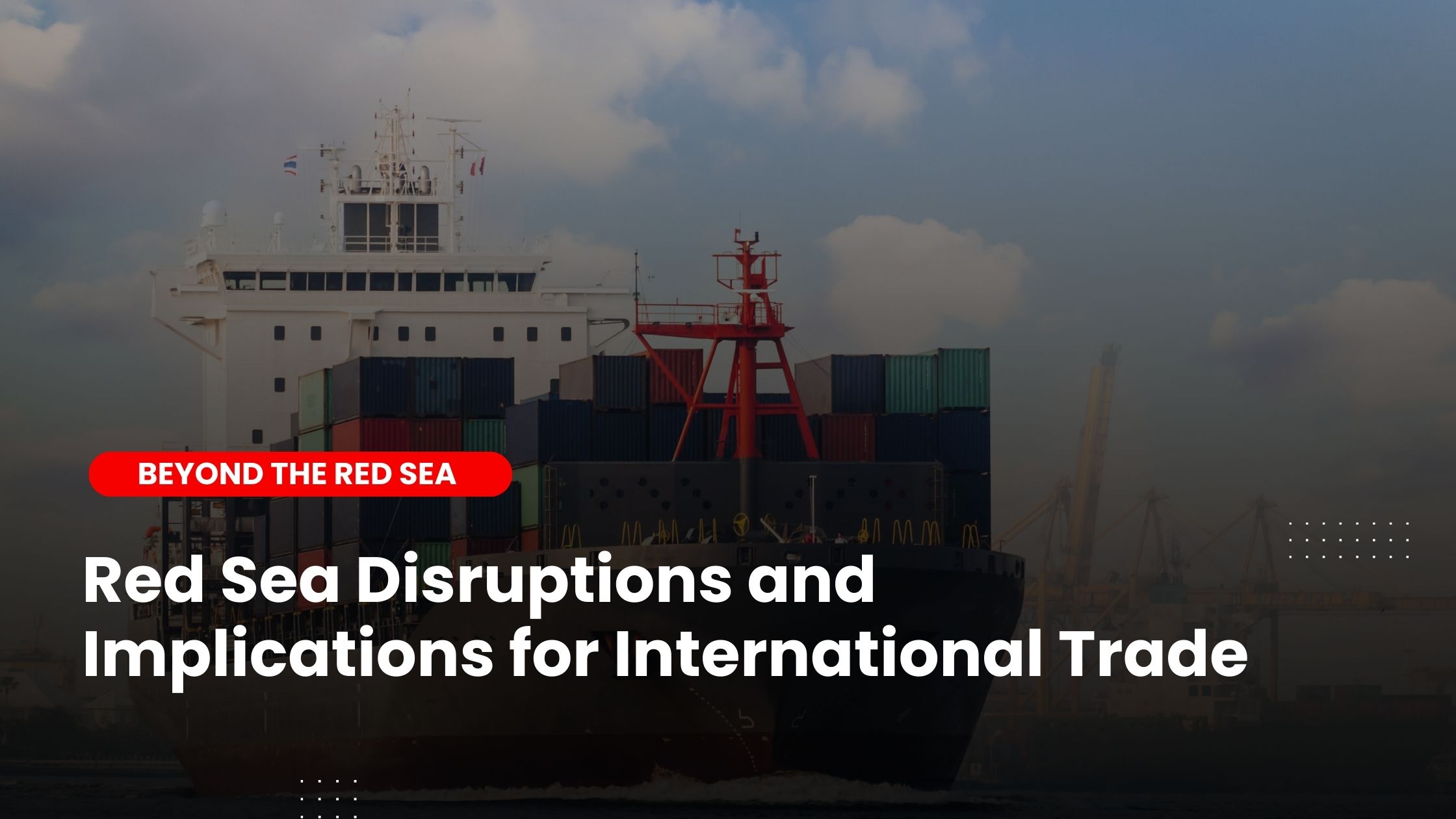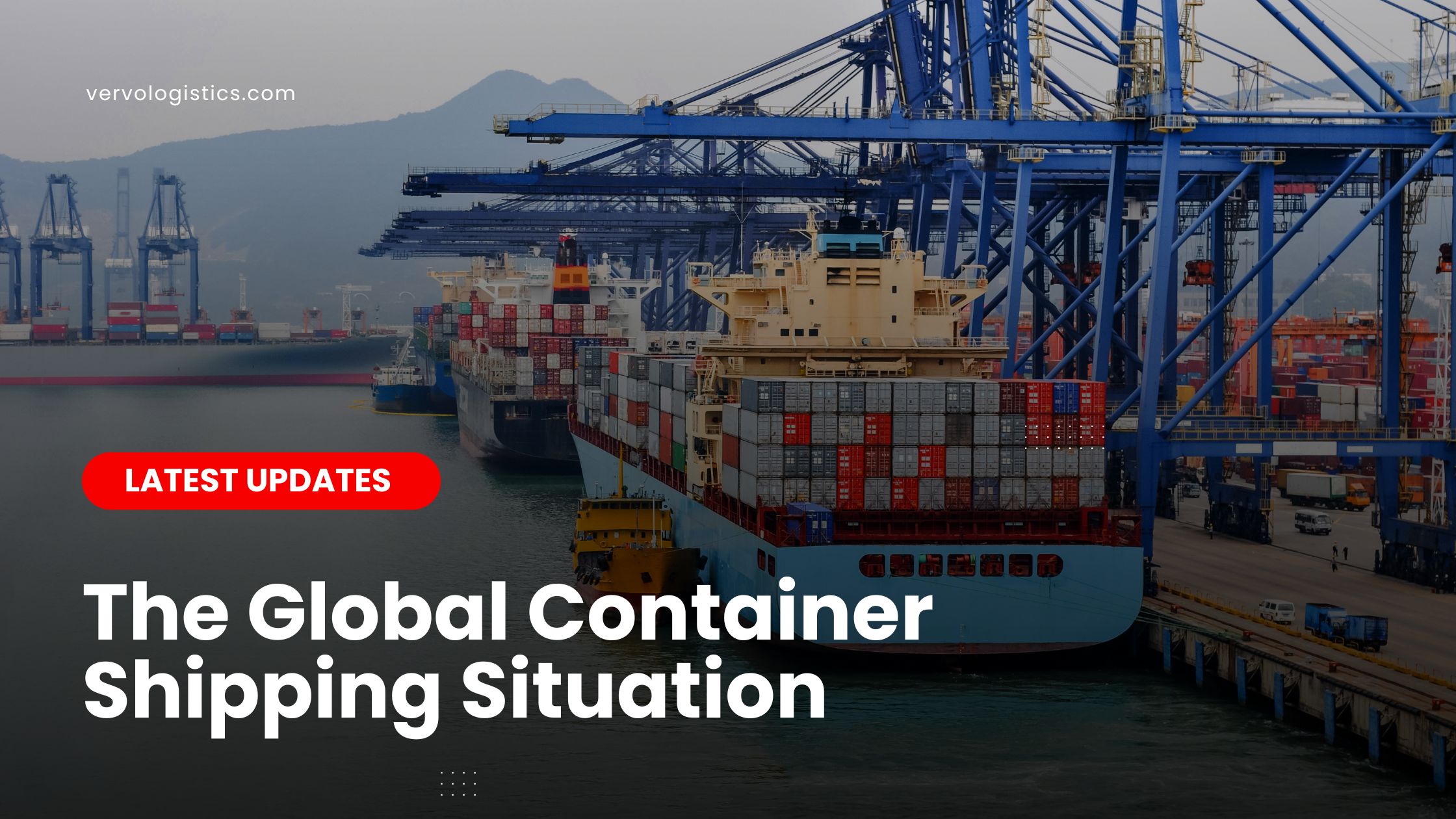The Red Sea shipping route is facing heavy disruptions that could affect global supply chains and beyond. This entails serious implications not only for the shipping and logistics sector and traders but even for end users.
What is the context of these disruptions? And how does it impact international trade? Let's delve into this topic:
Context and Background →
In the Red Sea, there have been a series of attacks on commercial vessels attributed to the Houthi rebel group in Yemen. These attacks involve various international ships, and they came in response to the ongoing humanitarian crisis in Gaza.
Reports indicate that over 18,800 Palestinian civilians, predominantly women and children, have been killed in the Israeli campaign.
This has led to the destruction of numerous hospitals and a severe restriction on humanitarian aid, exacerbating the plight of over a million displaced Palestinians. The situation has also caught the attention of human rights organizations and global health officials.
In response to this, the United Nations General Assembly called for a ceasefire resolution, advocated by 153 countries, including the UAE, to address the humanitarian situation. However, as the campaign is still ongoing, the Houthis have stated that the attacks will not stop until Israel ends its military actions in Gaza and allows for the delivery of food, medicines, and fuel 'proportionate' to the besieged Palestinian population.
Further, just yesterday, Malaysia reportedly banned Israeli ships from docking at its ports as a response to the ongoing atrocities.
Consequences on Global Trade →
Amidst this backdrop, global supply chains could face disruptions as the big shipping companies have diverted journeys away from the Red Sea. Ships taking this route go through Bab Al-Mandab from the south to reach Egypt's Suez Canal further north from the Indian Ocean and then the Mediterranean Sea to Europe.
This canal represents the fastest maritime route connecting Asia and Europe and plays a crucial role in the transport of oil and liquefied natural gas (LNG).
In the first 11 months of 2023, around 7.80 barrels of oil daily were transported through this route, as reported by Reuters.
Although no casualties have been reported in the attacks, vessels transporting goods through the strait of Bab al-Mandab have been heavily targeted.
Because of the attacks and the threat of future actions by other countries, several of the world's largest shipping firms, including Mediterranean Shipping Company and Maersk, have diverted vessels to a much longer route around Africa's Cape of Good Hope and then up the west side of the continent.
The longer journeys will add at least 10 days to shipping times and cost companies millions of dollars. This clearly affects not only the costs of shipping but also the final price of the goods transported, which affects the end-users.
Alternative Routes Beyond the Red Sea →
What are the alternative routes vessels can take beyond the Red Sea? And what are the limitations of each route? Here are the answers:
- Cape of Good Hope Maritime Route
The Cape of Good Hope is more secure, offering a safer journey for vessels and uninterrupted shipping. It is open to all sizes of vessels without the size restrictions of canals. However, this route adds about 3,500 nautical miles, extending travel time by at least 10 days. Moreover, longer journeys mean more fuel consumption, leading to increased operational costs.
- Rail Transport Through Russia
This route is beyond the Red Sea and typically faster than sea transport for overland distances. It is less susceptible to maritime traffic congestion. Also, generally, it is more fuel-efficient per ton-mile than road transport.
However, routes crossing Russia are currently not viable due to sanctions imposed on Russia. Also, rail infrastructure may not connect all desired start and end points. Rail systems can't handle volumes comparable to large cargo ships.
- Trucking Through the Gulf Lands
It typically refers to multimodal shipping from the Persian Peninsula, then trucking through the Gulf lands. This offers flexibility, as trucks can use various roads, adapting to changes in routes as needed. It is also easier and quicker to organize than sea or rail transport.
However, it entails limited volume, as it only offsets a small percentage of shipping capacity, while 12% of annual global trade passes through the Red Sea. It also entails higher costs per unit and is subject to delays and complications at international borders.
Implications For International Trade →
The situation in the Red Sea presents several significant implications for international trade, the shipping and logistics industry, and global supply chains. Let's analyze these implications with a focus on operational, economic, and strategic perspectives.
- Operational Implications
The redirection of ships from the Red Sea route is bound to impact supply chains, with consumer goods likely to bear the brunt. The current disruptions coincide with a less busy shipping period. Expectations of delayed product arrivals in stores are rising, as container ship voyages could extend by at least 10 days due to the longer Cape of Good Hope route.
An additional 10 days per journey not only delays the delivery of goods and escalates operational costs but also reduces the overall shipping capacity, as vessels are tied up for longer periods. The higher costs are likely to be passed on to consumers, affecting the final price of goods.
Other routes, like rail transport through Russia and trucking through the Gulf lands, have their own limitations, making these alternatives less feasible for handling the volume of trade that typically passes through the Red Sea.
- Economic Implications
Disruptions in the Suez Canal route can have ripple effects on the global supply chain, affecting industries ranging from energy to consumer goods.
S&P Global Market Intelligence analysts highlight that nearly 15% of Europe, the Middle East, and North Africa's imports from Asia and the Gulf are maritime shipments. This includes 21.5% of refined oil and over 13% of crude oil. Oil prices might escalate due to these disruptions. An increase in oil prices can lead to higher fuel prices and contribute to rising inflation.
Beyond oil, container ships also transport a wide array of consumer products, such as televisions, clothing, footwear, and sports gear.
The added distance by alternative routes means increased costs for companies. Shipping rates have climbed in the past week, and these expenses might be transferred to consumers by businesses.
While the increase in operational costs might be passed on to consumers, the shipping industry could still face reduced revenues due to longer transit times and potentially less overall shipping volume.
- Strategic and Geopolitical Implications
Long-term disruptions in the Red Sea might prompt a strategic shift in global trade routes, which could alter the dynamics of international trade. We look forward to increased efforts for diplomatic resolutions to ensure the safety and security of vital maritime routes.
The situation in the Red Sea highlights the need for diversified trade routes and more resilient supply chains, as it extends beyond the Red Sea by technically shutting down Malaysia’s seaports in the face of Israeli ships and container ships heading to and from Israel.
The shipping and logistics industry, along with global actors such as the UAE, will need to navigate these challenges carefully and reach a diplomatic resolution to minimize the impact on global trade and the economy.



 by vervo middle east for shipping and logisitcs services in the uae and ksa shipping company logistics solutions cargo services.jpg)
